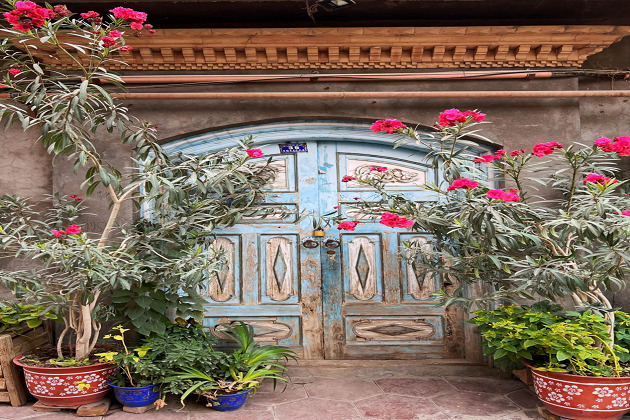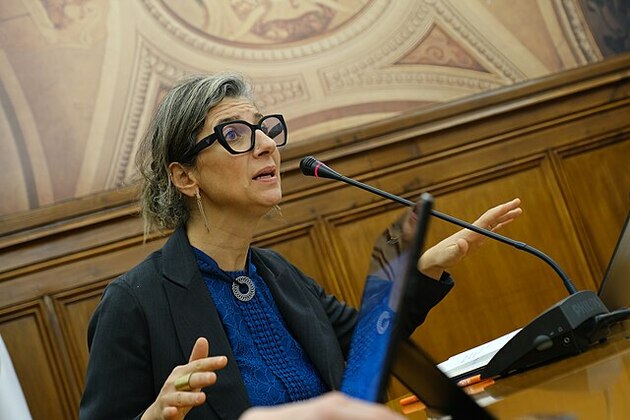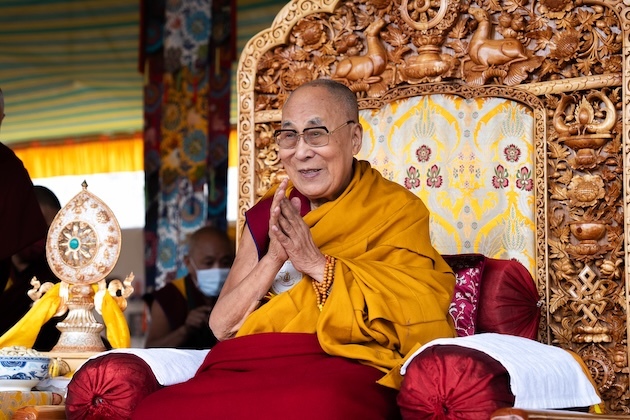Xinjiang: Culture as Bridge, Resource, and Mirror
Cambodian Times
04 Jul 2025, 05:55 GMT+10

Across the vast expanse of northwest China, Xinjiang is not only a geographical gateway but also a crossroads where history, culture, and politics converge. The stories of Xinjiang's many ethnic groups—Uyghur, Kazakh, Kirgiz, Mongol, Han, Hui, and others—possess both a long history and vivid vitality in the present. These stories are inscribed in the ruins of ancient Silk Road cities and live on in today's songs, epics, and oral traditions. As China has advanced the vision of "cultural protection and development" for Xinjiang, this land has become a testing ground for the possibilities and boundaries of multiculturalism within the modern nation-state.
A Mosaic of Cultures
Xinjiang's cultural landscape is like a mosaic, shaped by centuries of migration, trade, and religious exchange. Its treasures include the Kirgiz epic Manas, which is protected by special legislation, as well as the Uygur Muqam, Kazakh Aytes, Buddhist grottoes, ancient city sites, and the many languages—Chinese, Uygur, Kazakh, Mongolian, and more—that resonate through markets and classrooms. According to the latest official data, Xinjiang is home to 9,542 immovable cultural relic sites, six World Heritage sites, 126 registered museums, and over 220,000 artifacts.
This is more than just a matter of archaeology. Xinjiang's intangible cultural heritage—oral literature, folk music, crafts, and ritual customs—has been systematically inscribed in national and UNESCO lists. The work of digitizing texts, recording performances, and training a new generation of inheritors is a race against time, as urbanization and generational change threaten to erode collective memory.
The Vitality of Law and Tradition
In recent years, the protection of culture in Xinjiang has shifted from ad hoc rescue to a more institutional, legal footing. New regulations, such as the Xinjiang Uygur Autonomous Region Manas Intangible Cultural Heritage Protection Ordinance, not only systematically safeguard the epic Manas and related traditions, but also encourage innovation and adaptation in literature, the arts, and digital media, integrating them into education and tourism. Heritage sites such as the Beiting Ancient City have also been included under local legal protection, with specific requirements for the use of digital scanning, artificial intelligence, and other modern technologies to ensure that cultural relics remain "alive" for the broader public.
Of course, the vitality of these laws and institutions is inseparable from Xinjiang's broader historical and social context. Cultural policy in Xinjiang is explicitly connected to the national narrative of a "unified Chinese nation." The official vision is "harmony in diversity": recognizing the uniqueness of each ethnic culture while emphasizing their integral role in the entirety of Chinese civilization. In practice, this means promoting bilingual education (Mandarin and minority languages), supporting traditional festivals, and investing in museums, libraries, and multilingual public media.
Modernization and Tradition: A Dynamic Balance
In Xinjiang, modernization and the protection of traditional culture are by no means simply opposed. Rather, this region is exploring a path that integrates innovation with heritage. Economic development and cultural revitalization are closely intertwined: tourism projects, cultural and creative industries, and digital platforms inject fresh momentum into economic growth while also opening new channels for the dissemination of traditional culture.
Digitization and informatization have become important tools for protecting and sharing cultural heritage. Not only are historical sites now preserved more scientifically through digital scanning and virtual reality, but intangible cultural heritage is also reaching a wider audience through online platforms, digital archives, documentaries, and social media. For example, the Uygur Muqam, the Kirgiz epic Manas, and various traditional dances and music are now being recorded, digitized, and shared online, allowing more young people to learn, perform, and participate.
Within the modern education system, bilingual teaching and ethnic culture courses are being continually enriched, helping young people from all backgrounds adapt to contemporary society while providing institutional safeguards for the inheritance of traditional languages, customs, and arts. The improvement of public cultural services—museums, libraries, and cultural centers—has created important bridges between history and the present, between city and countryside.
Modern technology and industry have given new life to traditional culture, while traditional culture, in turn, infuses modern society with profound spiritual meaning and a sense of identity. In Xinjiang, the two mutually reinforce and grow together. The transmission of culture is no longer confined to oral tradition within families and villages but, through digitization and diverse forms of dissemination, has become a shared spiritual resource for the entire society.
A Long View
Contemporary Xinjiang is a place where past and present intersect. In the bustling city streets, a Mao-era statue stands beside a government-restored mosque; Silk Road museums and modern shopping malls vie for the attention of citizens and tourists alike. In such a pluralistic urban space, Xinjiang's culture flows, collides, and fuses between history and modernity.
This negotiation is not only reflected in the protection and utilization of historical heritage, but is also deeply mirrored in the creation of modern culture. As waves of globalization and urbanization reach Xinjiang, new art forms and traditional culture continuously collide and integrate, giving rise to unique local expressions. If we look back to 1988, China's very first film about breakdancing, Dance Fanatic of the Western Regions, was shot in Xinjiang. The film followed a group of young Xinjiang enthusiasts of breakdance and rock music—even construction workers could spontaneously dance. Some see this film as the starting point for Xinjiang's HipHop culture.
Whether or not this is the origin, today Xinjiang HipHop has become one of the most recognizable and resonant cultural symbols for young people across China. Uygur, Kazakh, Chinese, and English blend once again in Xinjiang's rap music, embodying a spirit of inclusiveness and free self-expression. This not only continues the region's tradition of coexistence and linguistic fusion, but also, through the language of global pop culture, draws more young people into the creation and transmission of Xinjiang's culture.
This phenomenon illustrates precisely that cultural protection and development in Xinjiang is not about sealing tradition in a glass case of history, but about constant reinterpretation and recreation within the torrents of modern life. Digital technology and new media enable more people to know, participate in, and share Xinjiang's diverse cultural expressions; whether it's epic storytellers or youths painting graffiti, dancing, and rapping in the streets, tradition and modernity are in ongoing dialogue, collision, and recombination.
The story of Xinjiang is about how to hold fast to cultural roots amid change, and how to let diverse voices resonate within unity. The true meaning of cultural preservation lies not only in maintaining old buildings or restoring relics, but in keeping the spiritual flame alive across generations—whether in the melodies of the Muqam or the beats of HipHop, all are articulating the same Xinjiang: remembering where we come from, and knowing where we are going.
Xinjiang's culture is constantly rejuvenated in the interplay of memory and innovation, inheritance and transformation. It is a mirror, reflecting who we once were, and illuminating who we might yet become. Between yesterday and tomorrow, this land continues to write its own cultural story.
 Share
Share
 Tweet
Tweet
 Share
Share
 Flip
Flip
 Email
Email
Watch latest videos
Subscribe and Follow
Get a daily dose of Cambodian Times news through our daily email, its complimentary and keeps you fully up to date with world and business news as well.
News RELEASES
Publish news of your business, community or sports group, personnel appointments, major event and more by submitting a news release to Cambodian Times.
More InformationInternational
SectionOver 60 companies named in UN report on Israel-Gaza conflict
GENEVA, Switzerland: A new United Nations report alleges that dozens of global corporations are profiting from and helping sustain...
UK lawmakers desigate protest group as terrorist organization
LONDON, UK - Lawmakers in the United Kingdom have voted overwhelmingly to proscribe the direct-action group Palestine Action as a terrorist...
Dalai Lama to address Buddhist conference, reveal succession plan
DHARAMSHALA, India: The Dalai Lama is set to address a significant three-day conference of Buddhist leaders this week, coinciding with...
US Supreme Court backs Texas efforts to shield minors online
WASHINGTON, D.C.: In a significant ruling last week, the U.S. Supreme Court upheld a Texas law requiring age verification for users...
Turkey, France battle wildfires amid early Europe heatwave
ISTANBUL/PARIS/BRUSSELS: As searing temperatures blanket much of Europe, wildfires are erupting and evacuation orders are being issued...
Venetians protest Bezos wedding with march through the town
VENICE, Italy: Over the weekend, hundreds of protesters marched through the narrow streets of Venice to voice their opposition to billionaire...
Sports
SectionOver 200 countries to broadcast NBA Abu Dhabi Games 2025
ABU DHABI, 3rd July, 2025 (WAM) -- The Department of Culture and Tourism - Abu Dhabi (DCT Abu Dhabi) and the National Basketball Association...
Pakistani celebrities' social media accounts remain blocked in India
New Delhi [India], July 3 (ANI): The social media accounts of several Pakistani actors and cricketers remain blocked after it was reported...
Jaipur to host inaugural Legen-Z T10 League from August 7
Jaipur (Rajasthan) [India], July 2 (ANI): The much-anticipated LEGEN-Z T10 League will be played from August 7 to August 13 at the...
Bengaluru Stampede: BCCI Ombudsman directs RCB, KSCA to file written replies to 'gross negligence' complaint
New Delhi [India], July 2 (ANI): The Board of Control for Cricket in India (BCCI) Ombudsman Justice (Retd) Arun Mishra has directed...
The Great Indian Kapil Show: Gautam Gambhir shows his funny side, Rishabh Pant gives his teammates 'devrani, jija' tags
Mumbai (Maharashtra) [India], July 2 (ANI): Actor-comedian Kapil Sharma is back with another episode of 'The Great Indian Kapil Show,'...
"Hard to believe": Shastri baffled by India's decision to rest Bumrah in second Test against England
Birmingham [UK], July 2 (ANI): Former head coach and cricketer Ravi Shastri didn't mince his words while expressing his discontent...













